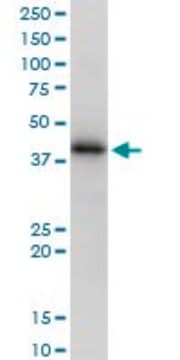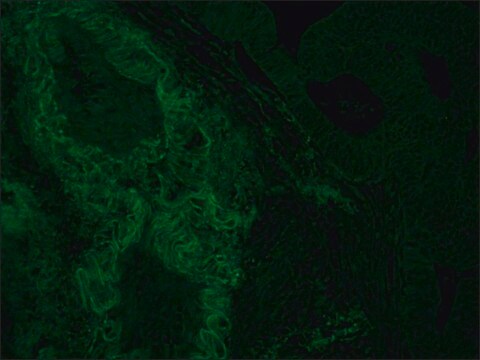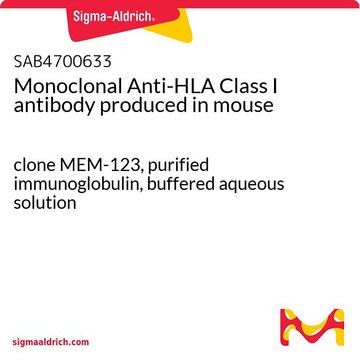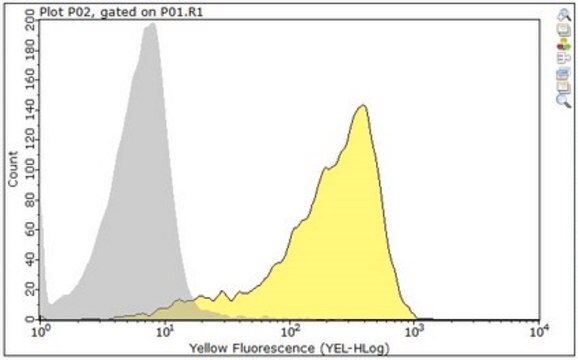H1650
Monoclonal Anti-HLA Class I Antigen antibody produced in mouse
clone W6/32, purified immunoglobulin, buffered aqueous solution
Sinónimos:
Monoclonal Anti-HLA Class I Antigen
About This Item
Productos recomendados
biological source
mouse
Quality Level
conjugate
unconjugated
antibody form
purified immunoglobulin
antibody product type
primary antibodies
clone
W6/32, monoclonal
form
buffered aqueous solution
species reactivity
monkey, human
technique(s)
flow cytometry: 5 μL using 1 × 106 cells
immunoprecipitation (IP): suitable
indirect immunofluorescence: 1:10 using acetone-fixed human tonsil frozen sections.
isotype
IgG2a
UniProt accession no.
shipped in
wet ice
storage temp.
2-8°C
target post-translational modification
unmodified
Gene Information
human ... HLA-A(3105) , HLA-B(3106) , HLA-C(3107)
¿Está buscando productos similares? Visita Guía de comparación de productos
General description
The previously assigned protein identifier P01891 has been merged into P04439. Full details can be found on the UniProt database.
Specificity
4th Workshop: code no. P1
5th Workshop: code nos. BP166, BP288, BP407, B 005
Immunogen
Application
Immunofluorescence (1 paper)
Biochem/physiol Actions
Physical form
Disclaimer
¿No encuentra el producto adecuado?
Pruebe nuestro Herramienta de selección de productos.
Storage Class
12 - Non Combustible Liquids
wgk_germany
WGK 1
flash_point_f
Not applicable
flash_point_c
Not applicable
Elija entre una de las versiones más recientes:
¿Ya tiene este producto?
Encuentre la documentación para los productos que ha comprado recientemente en la Biblioteca de documentos.
Los clientes también vieron
Nuestro equipo de científicos tiene experiencia en todas las áreas de investigación: Ciencias de la vida, Ciencia de los materiales, Síntesis química, Cromatografía, Analítica y muchas otras.
Póngase en contacto con el Servicio técnico









